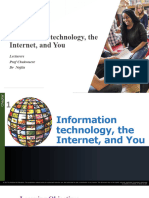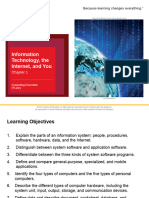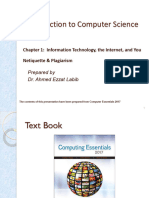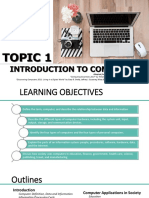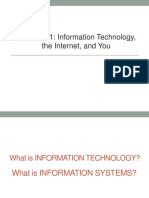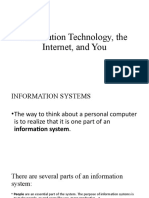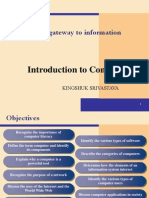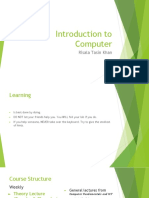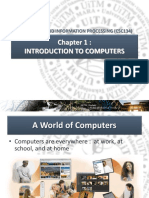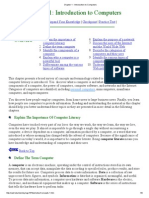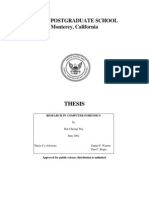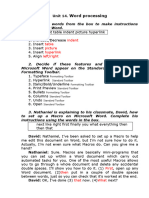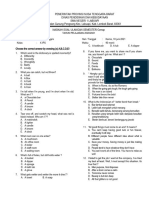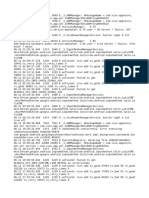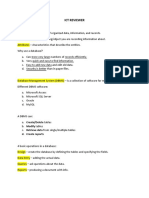0% found this document useful (0 votes)
7 views31 pagesLecture 1
The document provides an introduction to Information Technology, covering key components of information systems, types of software, hardware, and the Internet. It outlines learning objectives, including the differentiation between system and application software, types of computers, and the importance of connectivity. Additionally, it discusses the impact of technology on society and various careers in IT.
Uploaded by
Nouran HusseinCopyright
© © All Rights Reserved
We take content rights seriously. If you suspect this is your content, claim it here.
Available Formats
Download as PDF, TXT or read online on Scribd
0% found this document useful (0 votes)
7 views31 pagesLecture 1
The document provides an introduction to Information Technology, covering key components of information systems, types of software, hardware, and the Internet. It outlines learning objectives, including the differentiation between system and application software, types of computers, and the importance of connectivity. Additionally, it discusses the impact of technology on society and various careers in IT.
Uploaded by
Nouran HusseinCopyright
© © All Rights Reserved
We take content rights seriously. If you suspect this is your content, claim it here.
Available Formats
Download as PDF, TXT or read online on Scribd
/ 31
